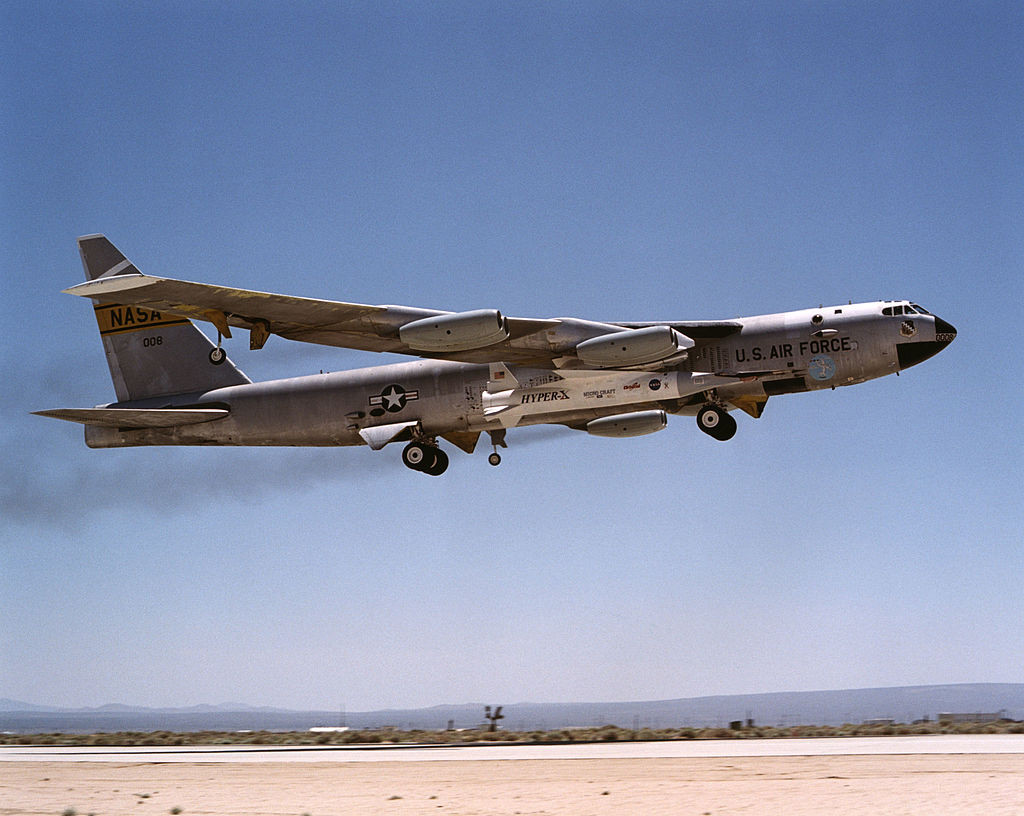Are you curious about How Long Would It Take To Fly Around The Earth? It’s a fascinating question that blends aviation, geography, and a touch of adventure. This guide explores different speeds and methods of air travel to estimate flight times and understand factors affecting travel duration. Discover more aviation insights and career opportunities at flyermedia.net, your ultimate resource for aviation news, flight school information, and aviation technologies. Let’s explore this exciting topic!
1. Understanding Earth’s Circumference
Before calculating flight times, knowing the Earth’s circumference is essential. According to NASA, the Earth’s circumference at the equator is approximately 40,075 kilometers (24,901 miles). This distance serves as the baseline for calculating how long it takes to circumnavigate the globe.
 Earth's circumference
Earth's circumference
2. How Long Would It Take to Fly Around The Earth In a Commercial Plane?
With an average cruising speed of 575-600 mph (925-965 km/h) as noted by Simple Flying, a commercial passenger plane could fly around the world in approximately 41 to 43 hours. This calculation excludes stops for refueling and layovers, which would significantly increase the total travel time.
Factors Affecting Commercial Flight Times
Several factors can affect the actual flight time, including:
- Wind Speed and Direction: Strong tailwinds can decrease flight time, while headwinds can increase it.
- Air Traffic Control: Delays due to air traffic can add to the overall travel time.
- Weather Conditions: Severe weather can cause rerouting or delays.
3. How Long Would It Take to Fly Around The Earth In a Supersonic Jet?
To fly around the Earth in under 24 hours, a supersonic jet capable of traveling faster than the speed of sound (1,225 km/h or 761.2 mph) would be necessary, according to NASA.
The NASA X-43
The NASA X-43, an uncrewed hypersonic aircraft, reached speeds of Mach 9.3 (11,484 km/h or 7,136 mph), potentially circumnavigating the globe in just under 3.5 hours. However, the X-43s were experimental and not designed for passenger travel.
 NASA X-43A Hypersonic Research Aircraft
NASA X-43A Hypersonic Research Aircraft
The Mikoyan-Gurevich MiG-25
The Mikoyan-Gurevich MiG-25, a fighter jet with a top speed of Mach 3.2, could theoretically complete the journey in just over 10 hours.
The Concorde’s Record
In 1995, the Concorde flew around the world in 31 hours and 27 minutes, including stops, setting a record for commercial aviation.
4. How Long Would It Take to Fly Around the Earth At The Speed of Light?
Traveling at the speed of light (300,000 km per second), one could circumnavigate the Earth approximately 7.5 times in a single second, an impossibility with current technology.
5. What is The Fastest Circumnavigation Records?
Several notable circumnavigation records highlight human determination and technological advancements.
Sir Francis Drake
Between 1577 and 1580, Sir Francis Drake took 1,018 days to voyage around the globe.
 French ultra long-distance runner Serge Girard begins his tour around the world in Paris, 31 january 2016. Credit: ALAIN JOCARD/AFP via Getty Images
French ultra long-distance runner Serge Girard begins his tour around the world in Paris, 31 january 2016. Credit: ALAIN JOCARD/AFP via Getty Images
Serge Girard
The current world record holder for the fastest circumnavigation on foot is Serge Girard, who took 434 days to travel 26,245 km.
The International Space Station
The International Space Station (ISS) orbits Earth in approximately 90 minutes, seeing 16 sunrises and sunsets every 24 hours. According to NASA, the ISS travels at an average speed of 17,500 miles per hour (28,000 kilometers per hour).
6. How Do Jet Streams Affect Flight Time?
Jet streams are fast-flowing, narrow air currents found in the atmosphere. According to the National Weather Service, jet streams can significantly affect flight times, especially on long-distance routes. Flying with a jet stream (tailwind) can increase the aircraft’s ground speed, reducing flight time, while flying against it (headwind) can decrease ground speed and extend flight time.
7. What Role Does Aviation Technology Play in Reducing Flight Times?
Advances in aviation technology continuously reduce flight times and improve efficiency.
Engine Efficiency
Modern jet engines are more fuel-efficient and powerful, allowing aircraft to fly faster and farther without refueling stops.
Aerodynamics
Improved aerodynamic designs reduce drag, increasing speed and fuel efficiency.
Navigation Systems
Advanced navigation systems allow for more direct and efficient routing, minimizing travel distance and time.
8. What Are the Challenges of Flying Around the World Non-Stop?
Flying around the world non-stop presents several significant challenges.
Fuel Capacity
Aircraft need an enormous fuel capacity to cover such long distances without refueling.
Crew Endurance
Pilots and crew must endure long hours in the air, requiring careful planning and multiple crew members.
Weather Routing
Avoiding adverse weather conditions requires precise weather forecasting and route adjustments.
Aircraft Maintenance
Ensuring the aircraft is in optimal condition for such a long flight requires thorough maintenance checks.
9. What Future Technologies Could Further Reduce Flight Times?
Several emerging technologies promise to further reduce flight times in the future.
Hypersonic Aircraft
Hypersonic aircraft, like the NASA X-43, could potentially travel at speeds exceeding Mach 5, drastically reducing flight times.
Electric Aircraft
While still in the early stages of development, electric aircraft could offer more sustainable and cost-effective air travel.
Space Tourism
Companies like SpaceX and Virgin Galactic are developing spacecraft for space tourism, offering suborbital flights that could circumnavigate the Earth in a matter of hours.
10. How Can I Get Involved in Aviation?
For those inspired by the possibilities of aviation, there are numerous ways to get involved.
Pilot Training
Pilot training programs offer the opportunity to learn to fly and obtain a pilot’s license. Find top flight schools and training programs at flyermedia.net.
Aviation Careers
Aviation offers a wide range of careers, including pilots, air traffic controllers, maintenance technicians, and engineers. Explore career options and educational resources at flyermedia.net.
Aviation Events and Organizations
Attending air shows and joining aviation organizations can provide valuable networking and learning opportunities.
11. Exploring Flight Schools in the USA
Choosing the right flight school is crucial for aspiring pilots. Several top flight schools in the USA offer comprehensive training programs.
Embry-Riddle Aeronautical University
Embry-Riddle Aeronautical University is renowned for its aviation programs and research. According to Embry-Riddle Aeronautical University, in July 2025, their programs provide students with the skills and knowledge needed for successful aviation careers.
University of North Dakota
The University of North Dakota offers various aviation programs, including flight training and aviation management.
Purdue University
Purdue University’s aviation technology program is highly regarded for its hands-on training and industry connections.
FlightSafety Academy
FlightSafety Academy provides professional pilot training and advanced aviation courses.
For more information on flight schools, visit flyermedia.net. Our directory includes detailed profiles, program descriptions, and student reviews to help you make an informed decision. Address: 600 S Clyde Morris Blvd, Daytona Beach, FL 32114, United States. Phone: +1 (386) 226-6000. Website: flyermedia.net.
12. What Are Some Key Aviation Regulations?
Understanding aviation regulations is essential for safety and compliance.
Federal Aviation Administration (FAA)
The FAA sets and enforces regulations for aviation in the United States. According to the FAA, these regulations cover aircraft maintenance, pilot certification, and air traffic control.
International Air Transport Association (IATA)
IATA sets global standards for airline safety, security, and efficiency. IATA’s standards help ensure consistent and reliable air travel worldwide.
European Aviation Safety Agency (EASA)
EASA regulates aviation safety in Europe, setting standards for aircraft design, maintenance, and operation.
13. Staying Updated with Aviation News
Keeping up with the latest aviation news and trends is crucial for anyone interested in the field.
Online Aviation News Sources
Websites like FlightGlobal, Aviation Week, and Simple Flying provide up-to-date news and analysis of the aviation industry.
Industry Conferences and Events
Attending aviation conferences and events offers opportunities to learn about new technologies, network with professionals, and stay informed about industry trends.
Flyermedia.net Aviation News
Flyermedia.net offers a comprehensive news section covering everything from new aircraft designs to regulatory changes. Visit flyermedia.net to stay informed about the latest developments in aviation.
14. Exploring Career Opportunities in Aviation
Aviation offers a wide range of career opportunities, from piloting and engineering to air traffic control and management.
Pilots
Pilots operate commercial, cargo, and private aircraft, requiring extensive training and certification.
Air Traffic Controllers
Air traffic controllers manage the flow of air traffic, ensuring the safe and efficient operation of airports and airspace.
Aircraft Maintenance Technicians
Aircraft maintenance technicians inspect, repair, and maintain aircraft, ensuring they are safe and airworthy.
Aeronautical Engineers
Aeronautical engineers design and develop aircraft and related technologies, playing a crucial role in advancing aviation.
15. Tips for Frequent Air Travelers
Frequent air travelers can benefit from several tips to make their journeys more comfortable and efficient.
Travel Light
Packing efficiently and traveling with carry-on luggage can save time and avoid baggage fees.
Join Loyalty Programs
Airline loyalty programs offer benefits like priority boarding, free upgrades, and access to airport lounges.
Stay Informed
Monitoring flight status and weather conditions can help travelers anticipate and avoid delays.
Use Travel Apps
Travel apps can provide useful information, such as flight tracking, airport maps, and hotel bookings.
16. The Impact of Weather on Air Travel
Weather conditions significantly impact air travel, causing delays, rerouting, and cancellations.
Thunderstorms
Thunderstorms can produce severe turbulence, lightning, and heavy rain, making flying dangerous.
Snow and Ice
Snow and ice can reduce visibility and affect aircraft performance, requiring de-icing procedures.
Fog
Fog can reduce visibility, making it difficult for pilots to land and take off safely.
High Winds
High winds can cause turbulence and make it challenging to control the aircraft, especially during landing and takeoff.
17. Innovations in Aircraft Design
Aircraft design innovations continuously improve safety, efficiency, and performance.
Composite Materials
Composite materials like carbon fiber are lightweight and strong, reducing aircraft weight and improving fuel efficiency.
Winglet Technology
Winglets reduce drag, increasing fuel efficiency and range.
Fly-by-Wire Systems
Fly-by-wire systems replace mechanical flight controls with electronic interfaces, improving precision and reducing pilot workload.
Advanced Avionics
Advanced avionics systems provide pilots with enhanced situational awareness and navigation capabilities.
18. Sustainable Aviation Practices
Sustainable aviation practices aim to reduce the environmental impact of air travel.
Alternative Fuels
Alternative fuels like biofuels and synthetic fuels can reduce carbon emissions.
Fuel-Efficient Aircraft
Newer aircraft designs are more fuel-efficient, reducing fuel consumption and emissions.
Optimized Flight Routes
Optimizing flight routes can minimize fuel consumption and emissions.
Carbon Offsetting
Carbon offsetting programs allow travelers to invest in projects that reduce carbon emissions, compensating for their flight’s environmental impact.
19. The Future of Air Travel: What to Expect
The future of air travel promises exciting advancements and innovations.
Autonomous Aircraft
Autonomous aircraft, or drones, are being developed for various applications, including cargo delivery and passenger transport.
Urban Air Mobility
Urban air mobility involves using electric vertical takeoff and landing (eVTOL) aircraft for transportation within cities.
Personalized Travel Experiences
Advances in technology will allow for more personalized travel experiences, with customized entertainment, seating, and in-flight services.
Seamless Travel Processes
Biometric identification and automated check-in processes will streamline airport procedures and reduce wait times.
20. Notable Aviation Achievements
Aviation history is filled with remarkable achievements and milestones.
The Wright Brothers’ First Flight
The Wright brothers’ first successful flight in 1903 marked the beginning of powered aviation.
Charles Lindbergh’s Solo Flight Across the Atlantic
Charles Lindbergh’s solo flight across the Atlantic in 1927 demonstrated the potential of long-distance air travel.
The Concorde’s Supersonic Flights
The Concorde’s supersonic flights revolutionized air travel, reducing transatlantic flight times to just a few hours.
The International Space Station
The International Space Station represents a significant achievement in space exploration and international cooperation.
FAQ: How Long Would It Take to Fly Around the Earth?
1. How long would it take to fly around the Earth in a commercial airplane?
A commercial airplane can fly around the Earth in approximately 41 to 43 hours, excluding stops.
2. What is the fastest time someone has flown around the world?
In 1995, the Concorde flew around the world in 31 hours and 27 minutes, including stops.
3. Can I fly around the world in under 24 hours?
Yes, but it requires a supersonic jet capable of speeds exceeding 1,670 km/h.
4. How fast does the International Space Station orbit the Earth?
The International Space Station orbits the Earth at approximately 28,000 km/h.
5. What factors affect the time it takes to fly around the Earth?
Factors include wind speed, air traffic control, weather conditions, and the aircraft’s speed.
6. What is a jet stream and how does it affect flight times?
A jet stream is a fast-flowing air current that can either decrease or increase flight times depending on the direction of travel.
7. What new technologies could reduce flight times in the future?
Hypersonic aircraft, electric aircraft, and space tourism are emerging technologies that could drastically reduce flight times.
8. How do I become a pilot and get involved in aviation?
You can enroll in a pilot training program at a certified flight school. Visit flyermedia.net for information on flight schools and aviation careers.
9. What are some key aviation regulations I should be aware of?
Key regulations are set by the FAA, IATA, and EASA, covering safety, security, and operational standards.
10. Where can I find the latest aviation news and updates?
Stay updated with aviation news on websites like FlightGlobal, Aviation Week, and flyermedia.net.
Ready to pursue your aviation dreams? Visit flyermedia.net today to explore flight schools, read the latest aviation news, and discover exciting career opportunities in the USA! Whether you’re interested in becoming a pilot, engineer, or air traffic controller, flyermedia.net has the resources and information you need to take off. Don’t wait—your aviation journey starts here! Address: 600 S Clyde Morris Blvd, Daytona Beach, FL 32114, United States. Phone: +1 (386) 226-6000. Website: flyermedia.net.